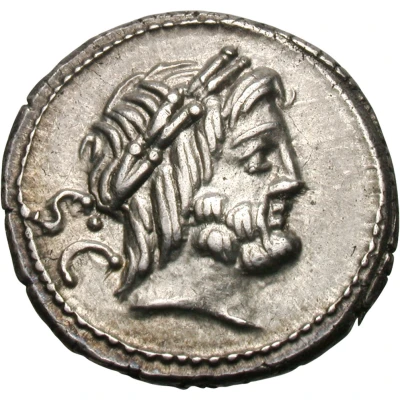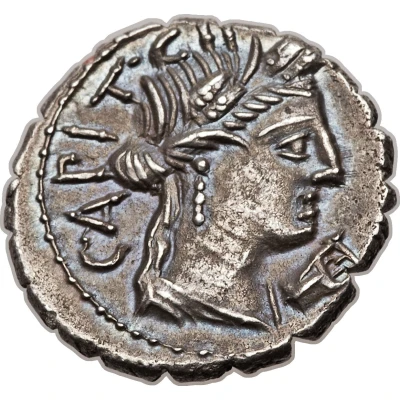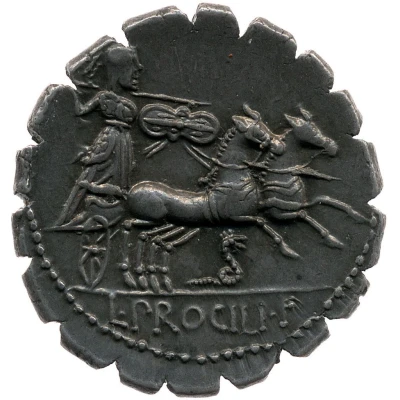


© Heritage Auctions
Denarius Procilia: Lucius Procilius; S•C / L•PROCILI F 80 BC
80 BC year| Silver | 4.02 g | 19 mm |
| Issuer | Rome › Roman Republic (509 BC - 27 BC) |
|---|---|
| Period | Republic (509 BC - 27 BC) |
| Type | Standard circulation coin |
| Year | 80 BC |
| Value | Denarius (1) |
| Currency | Denarius of 16 Asses (141 – 27 BC) |
| Composition | Silver |
| Weight | 4.02 g |
| Diameter | 19 mm |
| Shape | Round (irregular) |
| Technique | Hammered |
| Orientation | Variable alignment ↺ |
| Demonetized | Yes |
| Updated | 2024-10-06 |
| Numista | N#66967 |
|---|---|
| Rarity index | 88% |
Reverse
Juno Sospita standing right, holding shield in left hand and hurling spear with right hand; before, snake at feet; behind, moneyer mark.
Border of dots.
Script: Latin
Lettering:
L•PROCILI
F
Translation: Lucius Procilius Filius
Comment
The gens Procilia was a family, said to be of Lanuvian origin, of the plebeian order, as appears from its name being associated with the tribunate of the people.Interesting fact
The Denarius coin was used as a means of payment for Roman soldiers during the Roman Republic. It was a silver coin that was valued at 10 asses, which was the standard unit of currency at the time. The Denarius coin was introduced during the reign of Julius Caesar and it remained in circulation until the fall of the Roman Empire. It's interesting to note that the coin's design changed over time, with different emperors and officials adding their own images and symbols to the coin. Despite its long history, the Denarius coin remained a stable form of currency and played a significant role in the Roman economy.
Price
| Date | Mintage | VG | F | VF | XF | AU | UNC |
|---|---|---|---|---|---|---|---|
| ND (-80) | - | - | - | - | - | - |
Values in the table are based on evaluations by sales realized on Internet platforms. They serve as an indication only for Denarius (Procilia: Lucius Procilius; S•C / L•PROCILI F) (80 BC) coin.



